

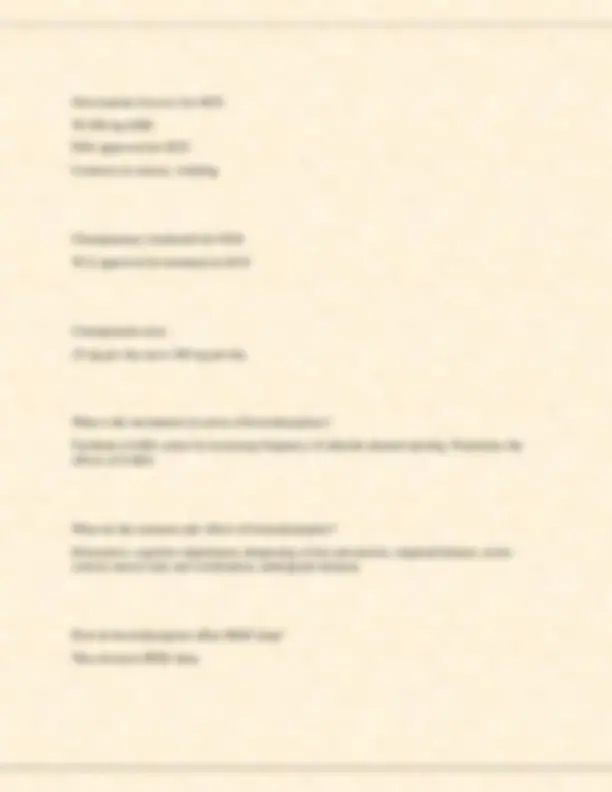
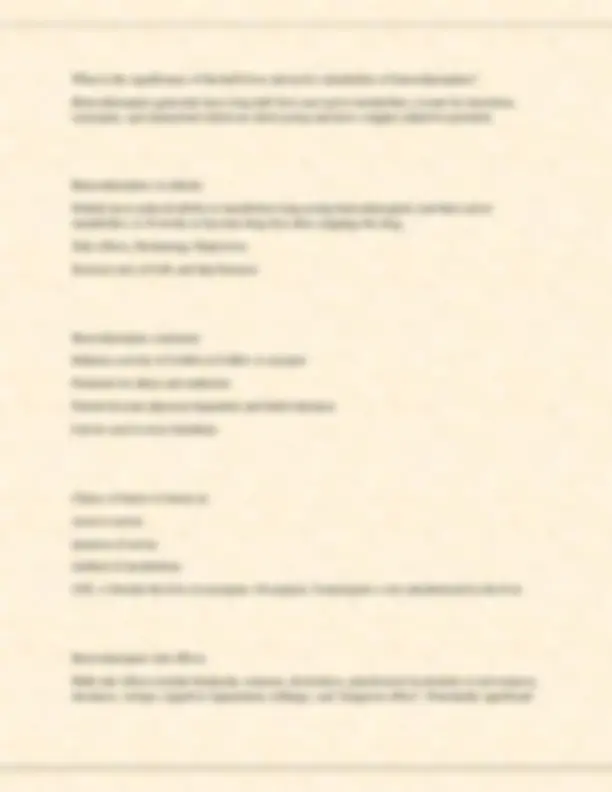
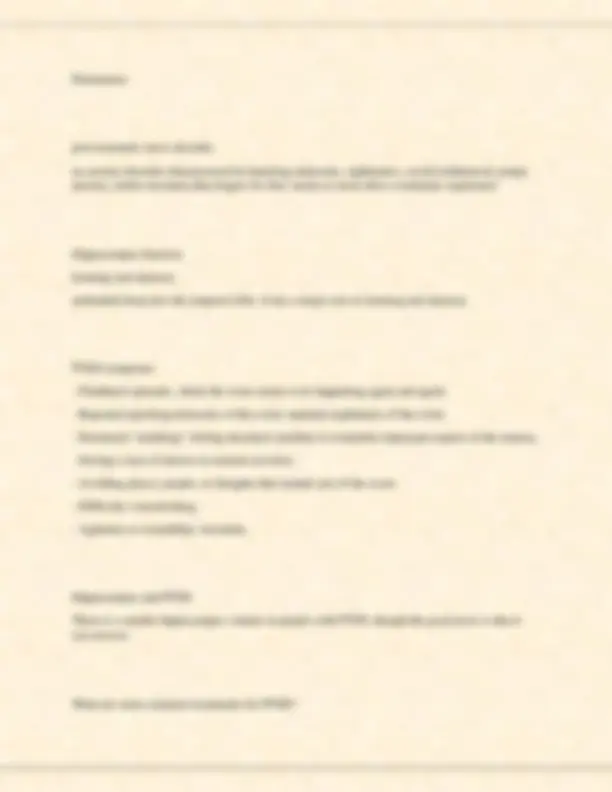
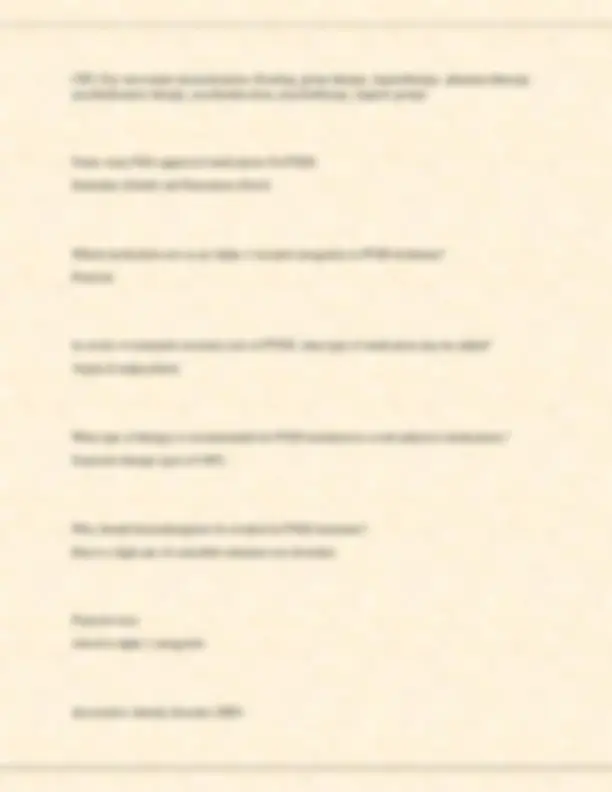

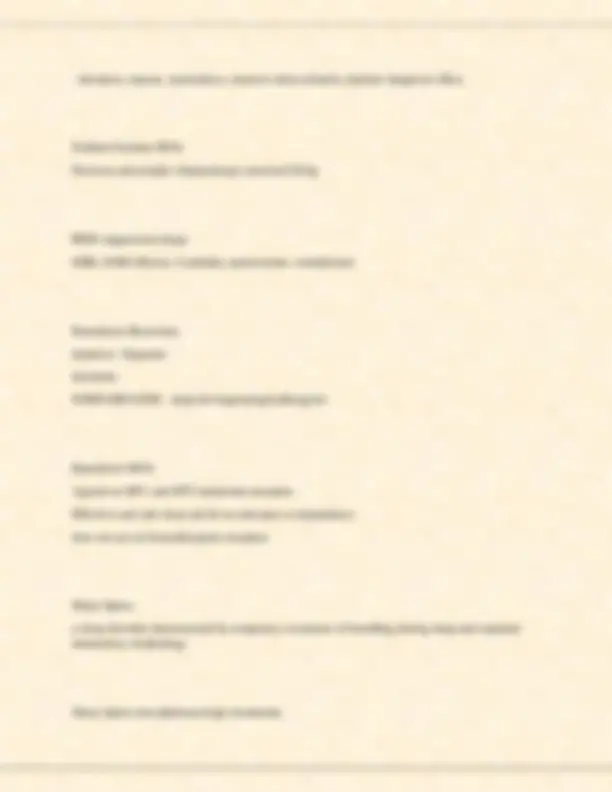
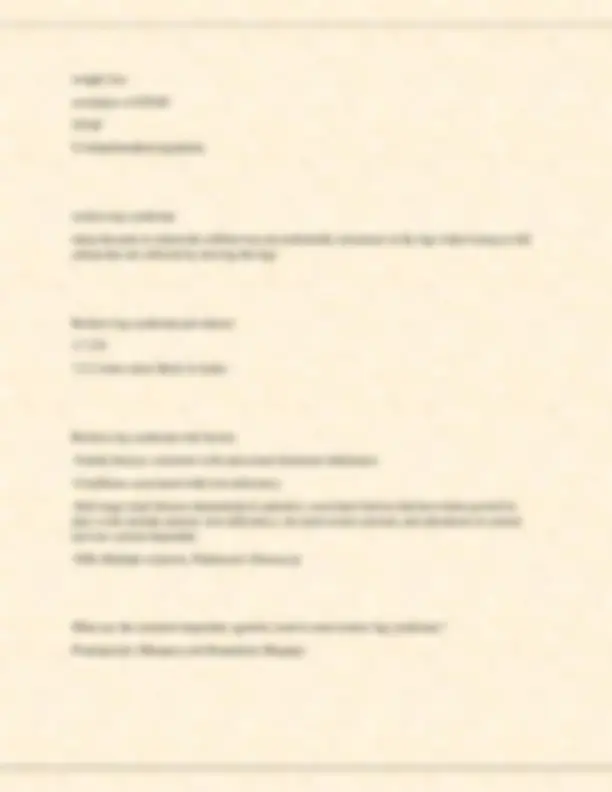
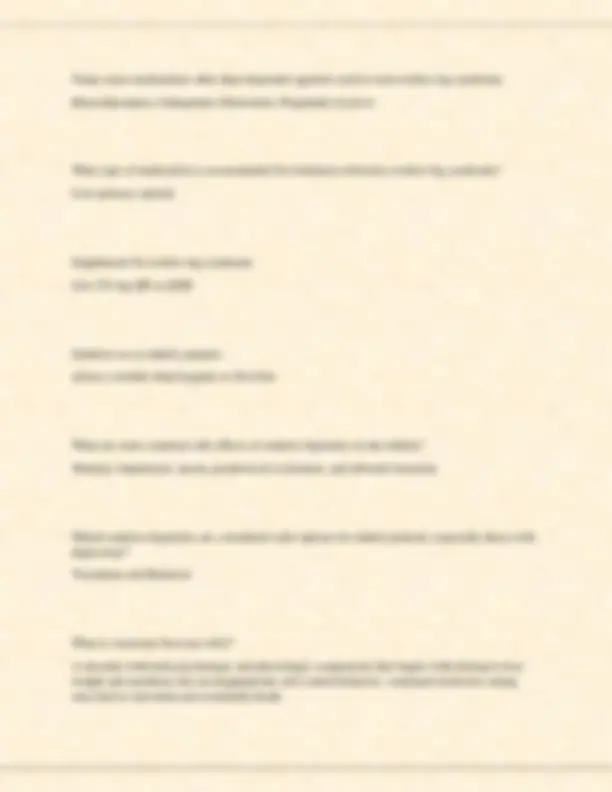

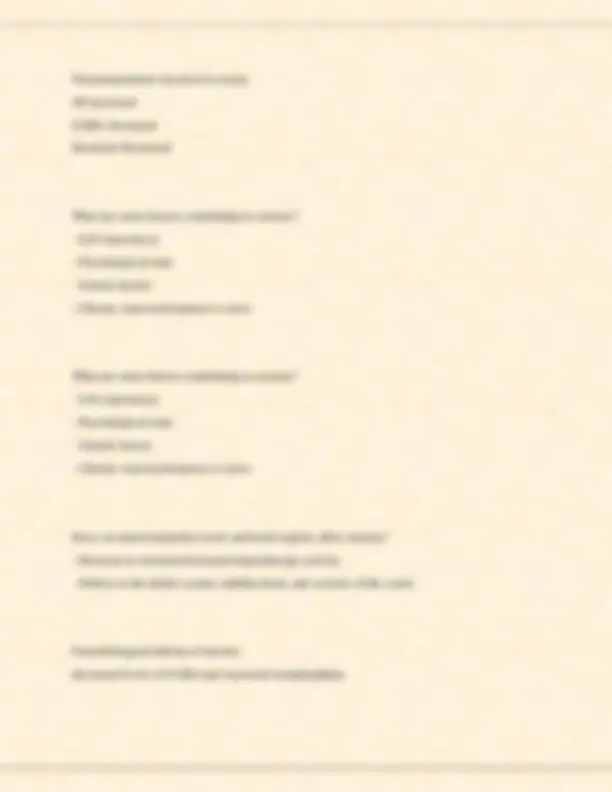

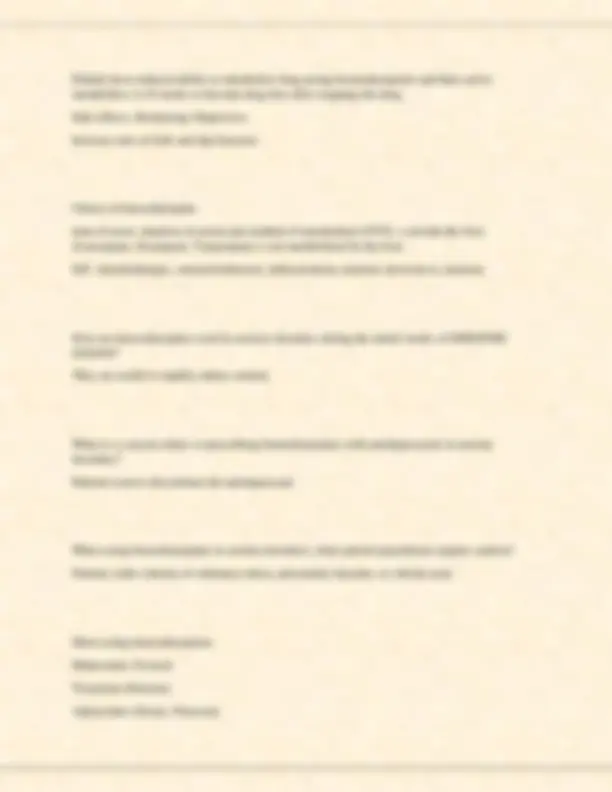
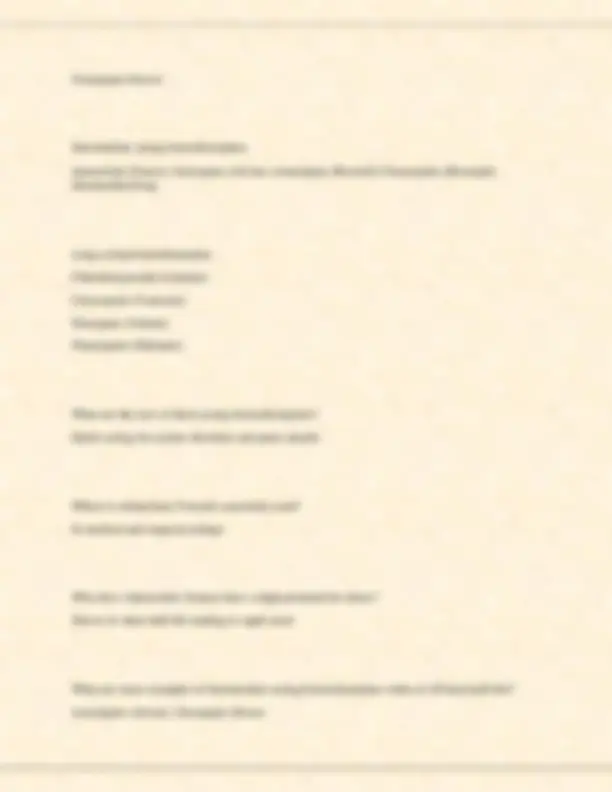

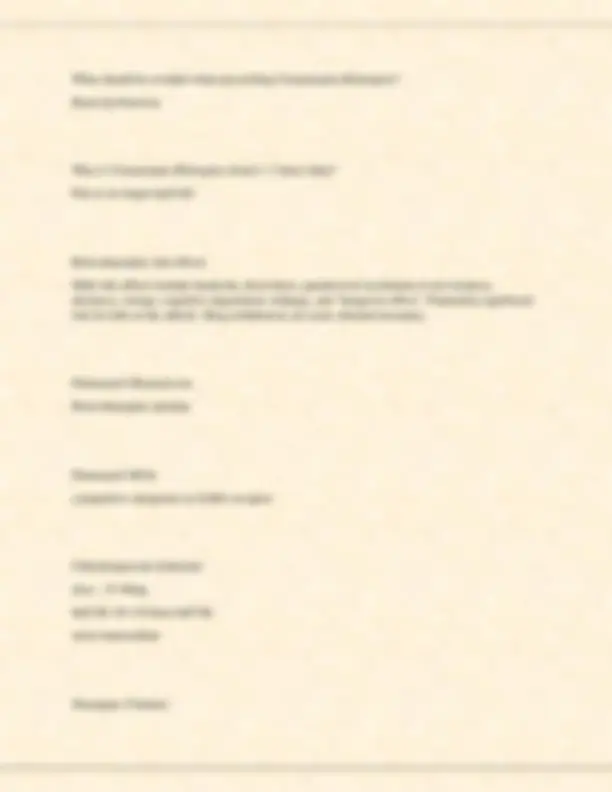

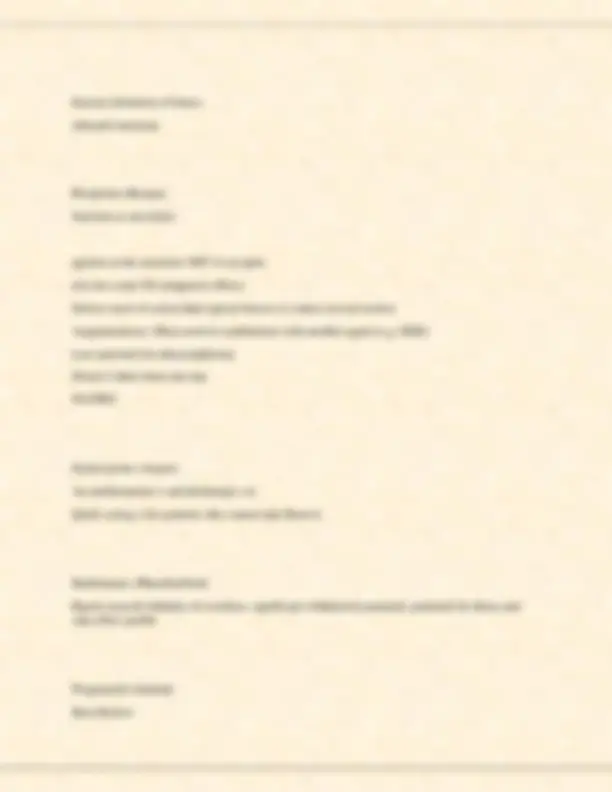
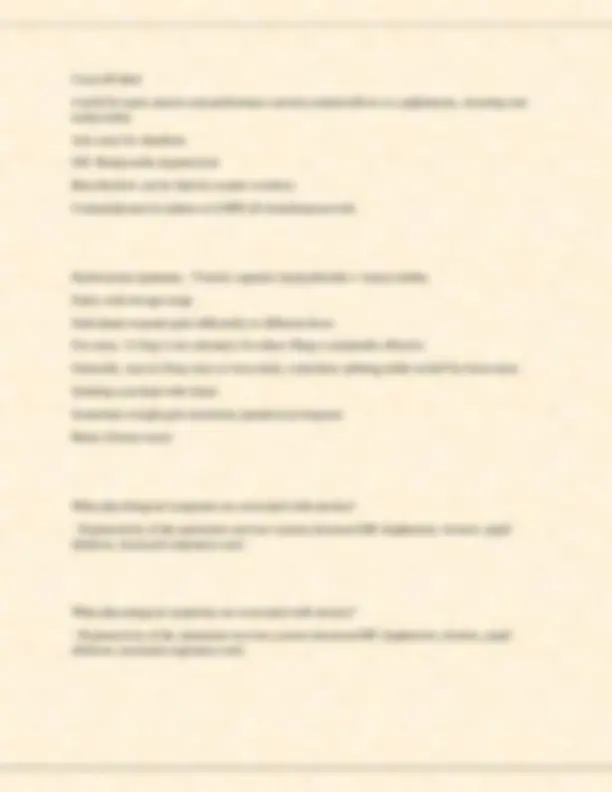



Study with the several resources on Docsity

Earn points by helping other students or get them with a premium plan


Prepare for your exams
Study with the several resources on Docsity

Earn points to download
Earn points by helping other students or get them with a premium plan
Community
Ask the community for help and clear up your study doubts
Discover the best universities in your country according to Docsity users
Free resources
Download our free guides on studying techniques, anxiety management strategies, and thesis advice from Docsity tutors
NS G552 / NSG 552 Exam 2 Study Guide (Latest 2025 / 2026): Psychopharmacology | Grade A | Questions and Answers (Verified Elaborations) 100% Correct – Wilkes.
Typology: Exams
1 / 28

This page cannot be seen from the preview
Don't miss anything!





















agoraphobia fear or avoidance of situations, such as crowds or wide open places, where one has felt loss of control and panic Agoraphobia treatment CBT and SSRIs Generalized Anxiety Disorder (GAD) a disorder characterized by chronic excessive worry accompanied by three or more of the following symptoms: restlessness, fatigue, concentration problems, irritability, muscle tension, and sleep disturbance generalized anxiety disorder treatment SSRIs, SNRIs (first line); buspirone (second line) Can consider augmenting with short term use of benzodiazepines or Buspar panic disorder An anxiety disorder marked by unpredictable minutes-long episodes of intense dread in which a person experiences terror and accompanying chest pain, choking, or other frightening sensations. What are the common behavioral therapies for panic disorder? Behavioral therapy, CBT, psychodynamic therapy, psychoeducational approach
What are the common pharmacological treatments for panic disorder? SSRI, SNRI, TCAs (through limited use), Benzos (use with caution, short-term) What is the FDA-approved benzodiazepine for panic disorder? Alprazolam (Xanax) social phobia (social anxiety disorder) fear of interacting with others or being in social situations that might lead to a negative evaluation or embarrassment. What are the common treatments for social phobia? Cognitive behavioral therapy, social skills training, medication What type of therapy is commonly used to treat social phobia? Cognitive behavioral therapy What medications are commonly prescribed for social phobia? Xanax (benzodiazepines), SSRIs, SNRIs, Prozac What are some examples of medications used to reduce anxiety in social phobia? Xanax (benzodiazepines), SSRIs, SNRIs, Prozac
Fluvoxamine (Luvox) for OCD 50 - 300 mg SSRI FDA approved for OCD Common s/e nausea, vomiting Clomipramine (Anafranil) for OCD TCA approved for treatment in OCD Clomipramine dose 25 mg per day up to 100 mg per day. What is the mechanism of action of benzodiazepines? Facilitates GABA action by increasing frequency of chloride channel opening. Potentiates the effects of GABA. What are the common side effects of benzodiazepines? Drowsiness, cognitive impairment, dampening of fear and anxiety, impaired balance, motor control, muscle tone and coordination, anterograde amnesia. How do benzodiazepines affect REM sleep? They decrease REM sleep.
What is the significance of the half-lives and active metabolites of benzodiazepines? Benzodiazepines generally have long half-lives and active metabolites, except for triazolam, oxazepam, and midazolam which are short-acting and have a higher addictive potential. Benzodiazepines in elderly Elderly have reduced ability to metabolize long-acting benzodiazepines and their active metabolites; 6-10 weeks to become drug-free after stopping the drug. Side effects: Dementing; Depressive Increase rates of falls and hip fractures Benzodiazepine continued Enhance activity of GABA at GABA-A receptor Potential for abuse and addiction Patient become physical dependent and build tolerance Can be used to treat Akathisia Choice of benzo is based on onset to action duration of action method of metabolism OTL = Outside the liver (Lorazepam, Oxazepam, Temazepam) = not metabolized by the liver Benzodiazepine side effects Mild side effects include headache, amnesia, drowsiness, paradoxical excitement or nervousness, dizziness, vertigo, cognitive impairment, lethargy, and "hangover effect". Potentially significant
Medical conditions that mimic or worsen anxiety symptoms: Cardiovascular Acute Coronary Syndrome Arrhythmia CHF Hypertension Mitral Valve Prolapse Medical conditions that mimic or worsen anxiety symptoms: Neurological Epilepsy Cerebrovascular disease Menier's disease Multiple Sclerosis Migraine Encephalitis Early Dementia Medical conditions that mimic or worsen anxiety symptoms: Metabolic Porphyria Diabetes Medical conditions that mimic or worsen anxiety symptoms: Pulmonary Asthma COPD Pulmonary Embolism
Pneumonia post-traumatic stress disorder an anxiety disorder characterized by haunting memories, nightmares, social withdrawal, jumpy anxiety, and/or insomnia that lingers for four weeks or more after a traumatic experience Hippocampus function learning and memory embedded deep into the temporal lobe. It has a major role in learning and memory PTSD symptoms
a rare dissociative disorder in which a person exhibits two or more distinct and alternating personalities. Formerly called multiple personality disorder. dissociative identity disorder characterized by Predominantly develops in victims of significant and chronic childhood trauma Patients with DID often cope with PTSD More than one distinct personality state resulting from a fragmented sense of self What is the focus of DID treatment? Reintegration of identities What is the role of SSRIs in DID treatment? Target comorbid depressive and/or PTSD symptoms What is the purpose of Prazosin in DID treatment? To address nightmares How does Naltrexone contribute to DID treatment? Reduces self-injurious behaviors Is ECT contraindicated in people with Dissociative Identity Disorder? No, ECT can be considered as a viable option, especially in combination with psychotherapy
Medications for sleep onset 2017 guidelines Eszopiclone Zaleplon (Sonata) Zolpidem Triazolam (Halcion) Temazepam Ramelteon (Rozerem) Medications for Sleep Maintenance 2017 guidelines Suvorexant (Belsomra) Eszopiclone (Lunesta) Zolpidem (Ambien) Temazepam (Restoril) Doxepin (Silenor) Narcolepsy A sleep disorder characterized by uncontrollable sleep attacks. The sufferer may lapse directly into REM sleep, often at inopportune times. Characterized by cataplexy (brief episodes of sudden bilateral loss of muscle tone) Hallucinations and/or sleep paralysis at the beginning or end of sleep episodes are common Slightly more in males than females narcolepsy etiology Loss of hypocretin in the hypothalamic neurons that may have an autoimmune component
weight loss avoidance of ETOH CPAP Uvulopalatopharyngoplasty restless leg syndrome sleep disorder in which the sufferer has uncomfortable sensations in the legs when trying to fall asleep that are relieved by moving the legs Restless leg syndrome prevalence 2 - 7.2% 1.5-2 times more likely in males Restless leg syndrome risk factors
What are the two types of Anorexia Nervosa? Restricting type & Binge-eating/purging type What are some common characteristics of individuals with Anorexia Nervosa? Preoccupation with their weight, body image, and being thin, intense fear of gaining weight or becoming fat, restriction of calorie intake, low body weight What are the common treatments for Anorexia Nervosa? CBT, family therapy, SSRI for comorbid anxiety and depression, Zyprexa, premeal anxiolytic How is CBT used in the treatment of Anorexia Nervosa? To address the psychological aspects of the disorder When is Zyprexa used in the treatment of Anorexia Nervosa? To treat preoccupation with weight and food What is the purpose of using a premeal anxiolytic in Anorexia Nervosa treatment? To encourage eating by decreasing anticipatory anxiety Bulimia Nervosa (BN)
antidepressant + therapy (CBT, IPT, group therapy) First line= SSRIs Prozac (60-80mg /day) is the only FDA approved med Others: Nutritional counseling and education binge eating disorder Not fixated on their body shape and weight• Recurrent episodes of binge eating• No compensatory behaviors (i.e. vomiting and laxative use) • Usually, obese What is the first-line treatment for binge eating disorder? SSRIs (e.g., Lexapro) What are some psychotherapy options for treating binge eating disorder? Cognitive Behavioral Therapy (CBT) and Interpersonal Psychotherapy (IPT) Which medication is FDA approved for treating binge eating disorder and suppresses appetite? Vyvanse (a stimulant) What is the association of Topamax with binge eating disorder treatment? Topamax is associated with weight loss in this context How does Orlistat (Xenical) work in the treatment of binge eating disorder? Orlistat inhibits pancreatic lipase, decreasing the amount of fat absorbed from the gastrointestinal tract
Neurotransmitters involved in worry NE increased GABA decreased Serotonin Decreased What are some factors contributing to anxiety?
First lane treatment for chronic anxiety / GAD / panic disorder SSRI How can neurotransmitter levels and brain regions affect anxiety?